When it comes to cutting and shaping hard materials, carbide inserts are the champions of the industry. But what makes China carbide inserts so special? How do you choose the right one? Let’s dive into this expansive guide where we break down everything you need to know about China carbide inserts. From types and applications to material properties and supplier details, we’ve got you covered.
Overview of China Carbide Inserts
China has become a leading producer of carbide inserts, known for their high quality and competitive pricing. These inserts are essential in machining processes for cutting, shaping, and drilling various materials, including metals, plastics, and wood. They offer superior hardness, wear resistance, and heat resistance, making them indispensable in industries ranging from automotive to aerospace.
Types of China Carbide Inserts
To navigate the wide variety of carbide inserts available, it’s crucial to understand the different types and their specific uses. Here’s a handy table to help you get started:
| Insert Type | Description | Applications |
|---|---|---|
| Turning Inserts | Designed for general turning operations. Includes shapes like CNMG, DNMG, TNMG. | Turning operations on metals. |
| Milling Inserts | Used in milling machines for creating grooves, slots, and other shapes. | Milling operations, slotting. |
| Drilling Inserts | Specially designed for drilling holes with high precision. | Drilling and boring operations. |
| Grooving Inserts | Designed for creating grooves and cuts on surfaces. | Grooving operations, parting-off. |
| Threading Inserts | Used for creating internal and external threads with precision. | Threading in machining processes. |
| Parting Inserts | Designed for parting or cutting off parts. | Parting-off operations. |
| Brazed Inserts | Inserts brazed to a tool holder for specific applications. | Various machining operations. |
| Indexable Inserts | Can be rotated and indexed to use multiple cutting edges. | Versatile use in multiple operations. |
| Coated Inserts | Feature a coating to enhance performance and longevity. | High-speed machining, increased wear resistance. |
| Uncoated Inserts | Pure carbide inserts without any coating, ideal for softer materials. | General-purpose machining. |
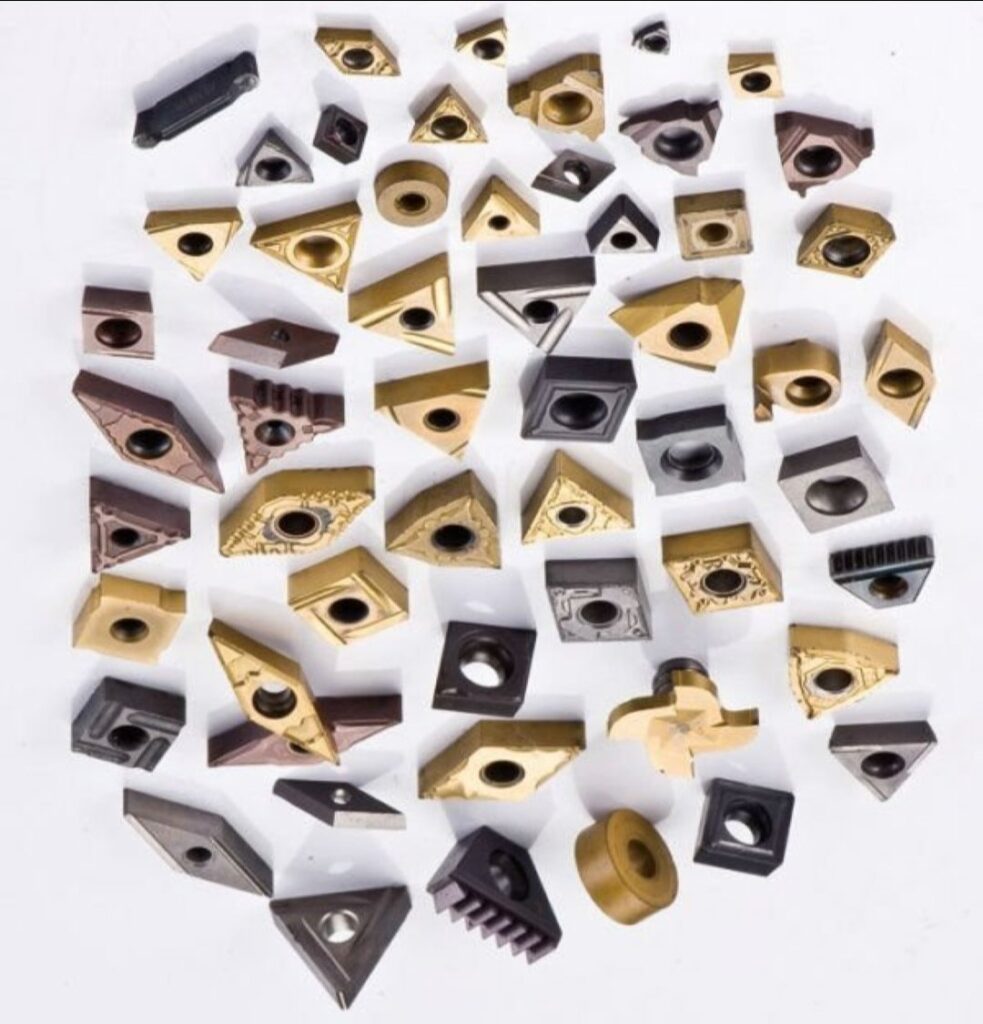
Applications of China Carbide Inserts
China carbide inserts are used across a plethora of industries. Here’s how different types of inserts are applied in various fields:
| Industry | Application | Insert Type |
|---|---|---|
| Automotive | Engine parts, transmission components | Turning, milling, drilling |
| Aerospace | Aircraft parts, landing gear components | Milling, turning, grooving |
| Medical | Surgical instruments, implants | Precision milling, drilling |
| Oil and Gas | Drilling equipment, pipeline components | Threading, turning |
| Electronics | Circuit boards, enclosures | Micro-milling, precision drilling |
| Construction | Heavy machinery parts, structural components | Turning, milling |
| Woodworking | Cutting tools, shaping tools | Special inserts for wood cutting |
| Metalworking | Various metal parts and tools | General-purpose turning, milling |
Material Properties of China Carbide Inserts
Understanding the material properties of carbide inserts is crucial for selecting the right one for your needs:
| Property | Description |
|---|---|
| Hardness | Extremely hard, typically above 90 HRA. |
| Toughness | High toughness to withstand mechanical shock and stress. |
| Wear Resistance | Superior wear resistance ensures longevity and consistent performance. |
| Heat Resistance | Can withstand high temperatures without losing hardness or strength. |
| Thermal Conductivity | Efficient thermal conductivity helps in heat dissipation during machining. |
| Chemical Stability | Resistant to oxidation and other chemical reactions. |
Composition, Properties, Characteristics
The composition and properties of carbide inserts play a significant role in their performance:
| Composition | Properties | Characteristics |
|---|---|---|
| Tungsten Carbide (WC) | High hardness, wear resistance | Ideal for general-purpose applications. |
| Cobalt (Co) | Acts as a binder for tungsten carbide | Enhances toughness and thermal stability. |
| Titanium Carbide (TiC) | Adds extra hardness and wear resistance | Improves performance in high-speed machining. |
| Tantalum Carbide (TaC) | Enhances toughness and hardness | Used in heavy-duty applications. |
| Nickel (Ni) | Acts as an additional binder | Improves corrosion resistance. |
| Chromium Carbide (CrC) | Adds wear resistance and hardness | Suitable for high-temperature applications. |
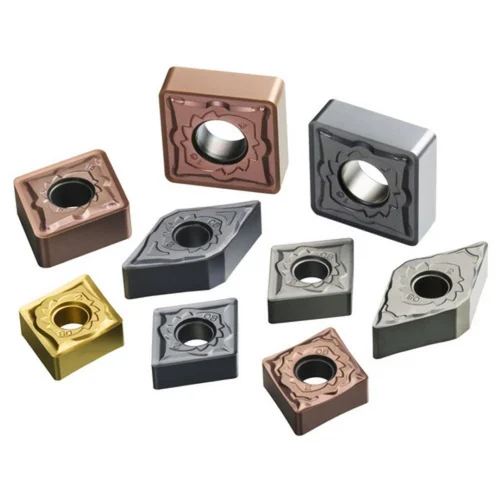
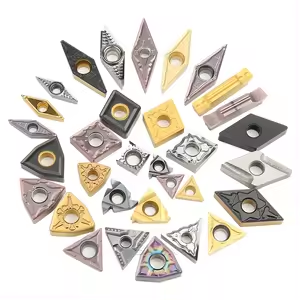
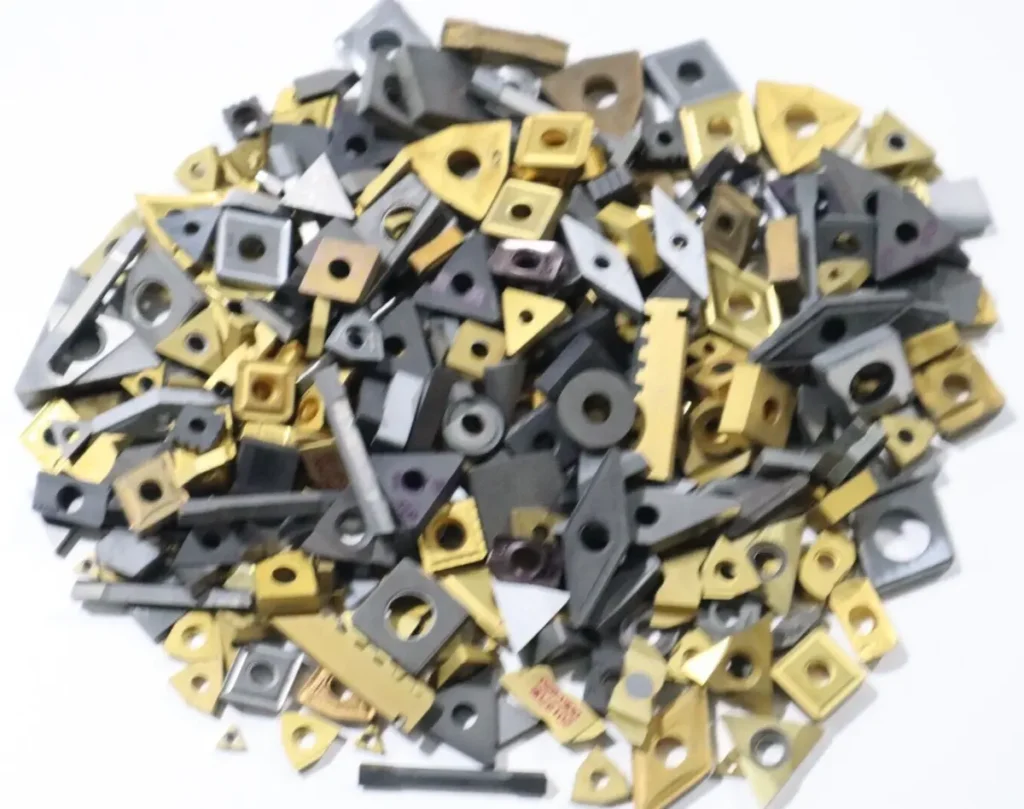


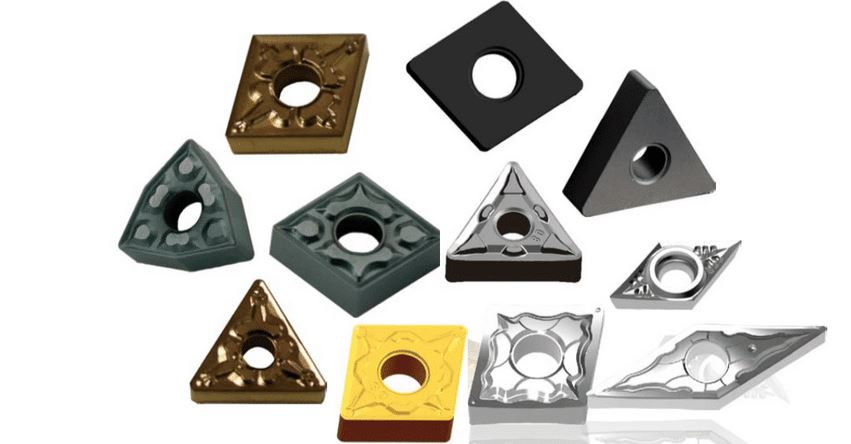
Hardness, Strength, and Wear Resistance
Here’s a comparison of different types of carbide inserts in terms of hardness, strength, and wear resistance:
| Insert Type | Hardness (HRA) | Strength (MPa) | Wear Resistance |
|---|---|---|---|
| Turning Inserts | 92 | 3000 | High |
| Milling Inserts | 91 | 2800 | Medium to High |
| Drilling Inserts | 93 | 3100 | Very High |
| Grooving Inserts | 90 | 2700 | High |
| Threading Inserts | 92 | 2900 | High |
| Parting Inserts | 91 | 2750 | Medium to High |
| Brazed Inserts | 89 | 2600 | Medium |
| Indexable Inserts | 92 | 3000 | High |
| Coated Inserts | 94 | 3200 | Very High |
| Uncoated Inserts | 88 | 2500 | Medium |
Specifications, Sizes, Shapes, Standards
Carbide inserts come in a variety of specifications, sizes, shapes, and adhere to international standards. Here’s a detailed look:
| Specification | Size (mm) | Shape | Standard |
|---|---|---|---|
| ISO P | 10-25 | Round, Square, Triangle, Diamond | ISO 1832 |
| ISO M | 12-30 | Round, Square, Triangle, Diamond | ISO 1832 |
| ISO K | 8-20 | Round, Square, Triangle, Diamond | ISO 1832 |
| ANSI C | 9-22 | Round, Square, Triangle, Diamond | ANSI B212.5 |
| ANSI M | 11-26 | Round, Square, Triangle, Diamond | ANSI B212.5 |
| JIS B | 10-24 | Round, Square, Triangle, Diamond | JIS B 4052 |
| DIN | 8-23 | Round, Square, Triangle, Diamond | DIN 4987 |
Suppliers and Pricing Details
Choosing the right supplier and understanding the pricing is crucial for making informed decisions. Here’s a comparison:
| Supplier | Price Range (per insert) | Region | Quality Rating |
|---|---|---|---|
| Zhuzhou Cemented Carbide | $2 – $15 | China | High |
| Sandvik Coromant | $10 – $50 | Global | Very High |
| Kennametal | $8 – $45 | Global | Very High |
| Sumitomo Electric | $9 – $40 | Global | High |
| ISCAR | $12 – $55 | Global | Very High |
| Mitsubishi Materials | $10 – $48 | Global | High |
| YG-1 | $7 – $35 | South Korea | High |
| TaeguTec | $6 – $33 | South Korea | High |
| Tungaloy | $11 – $52 | Global | Very High |
| Kyocera | $9 – $38 | Global | High |
Selecting the Right China Carbide Inserts
Choosing the right carbide insert involves considering several factors. Here’s a guide to help you select the right one:
| Factor | Considerations |
|---|---|
| Material to be Machined | Hardness, toughness, and type of material (e.g., steel, aluminum, wood) |
| Machining Operation | Type of operation (e.g., turning, milling, drilling) |
| Insert Shape | Depends on the required cut and toolpath (e.g., round, square, triangle) |
| Coating | Coated vs. uncoated based on the material and speed of operation |
| Insert Size | Size of the insert relative to the tool holder and the depth of cut required |
| Speed and Feed Rates | Determines the suitable insert grade to withstand the operational parameters |
| Cost | Budget constraints versus performance and longevity of the insert |
| Supplier Reputation | Reliability and quality assurance provided by the supplier |
Advantages and Limitations
Every type of carbide insert has its pros and cons. Let’s compare:
| Type | Advantages | Limitations |
|---|---|---|
| Turning Inserts | Versatile, suitable for various turning operations | May wear out faster on extremely hard materials |
| Milling Inserts | Excellent for creating precise shapes and grooves | Can be more expensive than turning inserts |
| Drilling Inserts | High precision, excellent for deep holes | May require specialized equipment |
| Grooving Inserts | Ideal for creating accurate grooves and cuts | Limited to specific grooving operations |
| Threading Inserts | Precise thread creation, high-quality finish | Can be complex to use for beginners |
| Parting Inserts | Efficient for parting off, reduces material waste | Limited to parting operations |
| Brazed Inserts | Strong and durable, excellent for high-stress operations | Not as versatile as indexable inserts |
| Indexable Inserts | Multiple cutting edges, cost-effective over time | Initial cost may be higher, requires compatible tool holders |
| Coated Inserts | Enhanced wear resistance, ideal for high-speed operations | Coating can be damaged if not used correctly |
| Uncoated Inserts | Cost-effective for general-purpose use | May wear out faster on harder materials |

FAQ
What are China carbide inserts?
Carbide inserts produced in China, known for their high quality and cost-effectiveness, are used in various machining processes to cut, shape, and drill materials.
How do I choose the right carbide insert?
Consider the material to be machined, the type of operation, insert shape, coating, size, speed and feed rates, cost, and supplier reputation.
What are the advantages of coated vs. uncoated inserts?
Coated inserts offer enhanced wear resistance and are ideal for high-speed operations. Uncoated inserts are cost-effective and suitable for general-purpose use but may wear out faster on harder materials.
Can carbide inserts be used for all materials?
Carbide inserts are versatile and can be used for a wide range of materials, including metals, plastics, and wood. However, the specific type of insert should be chosen based on the material’s hardness and the desired machining operation.
What is the difference between turning and milling inserts?
Turning inserts are used for general turning operations, while milling inserts are used in milling machines to create grooves, slots, and other shapes. Each has a specific design to cater to its respective operation.
By understanding these details, you can make an informed decision when selecting carbide inserts for your machining needs. Whether you’re working in automotive, aerospace, or any other industry, the right carbide insert can make all the difference in achieving precision and efficiency.




